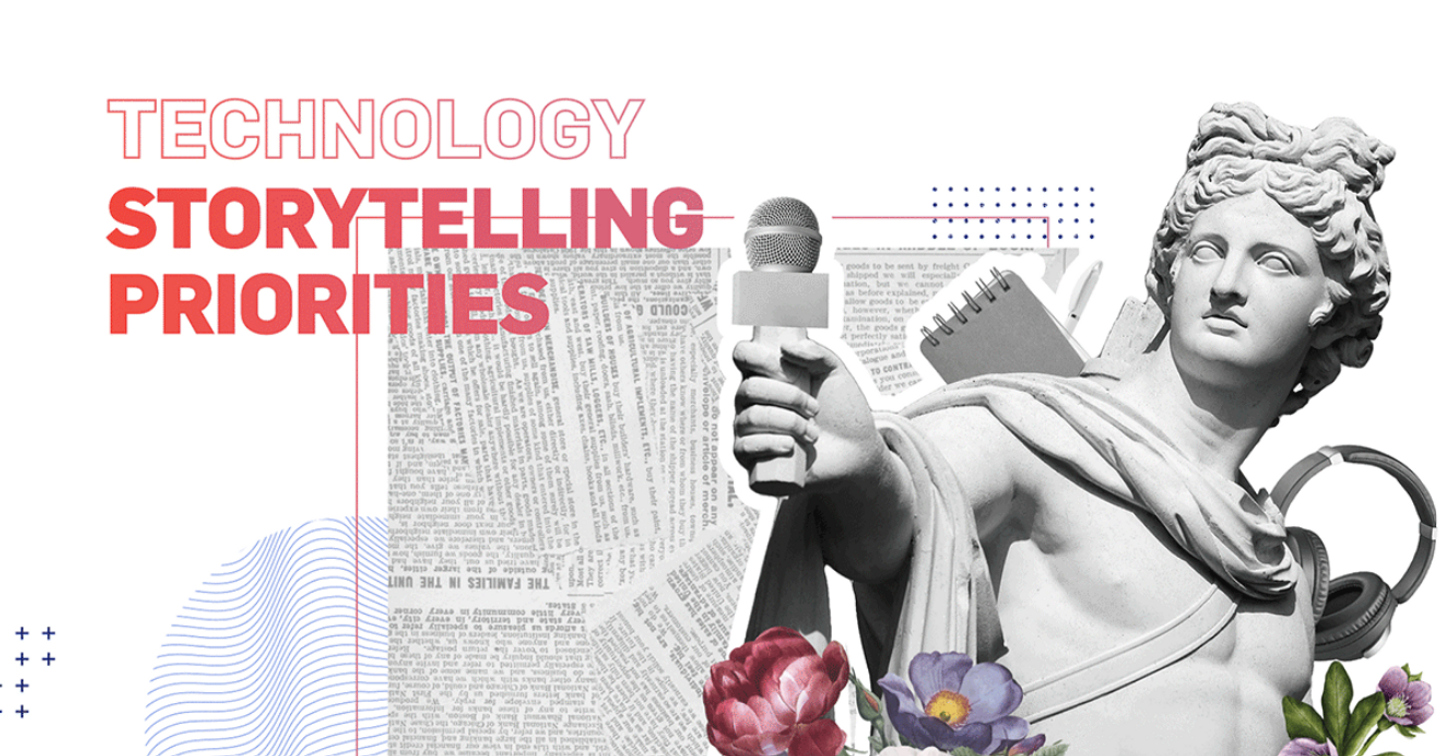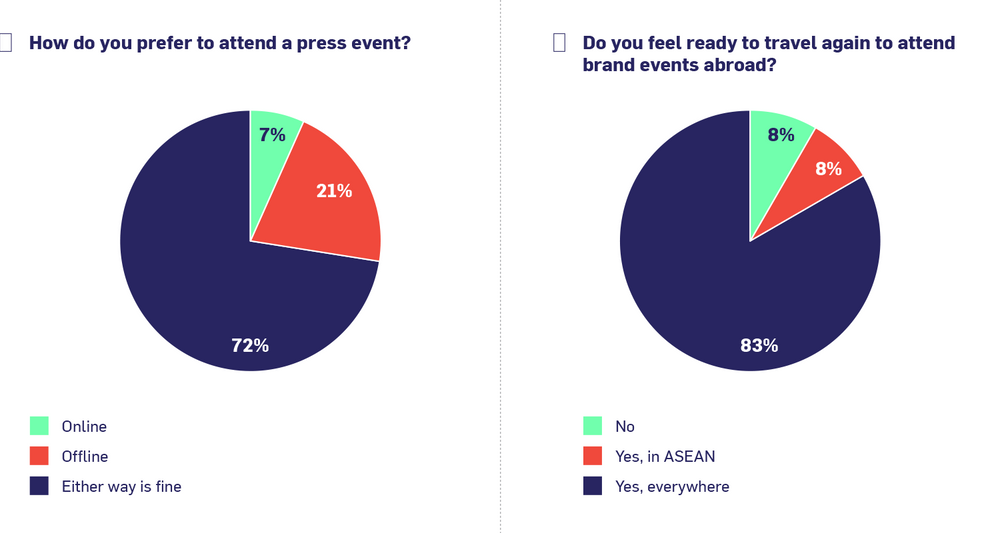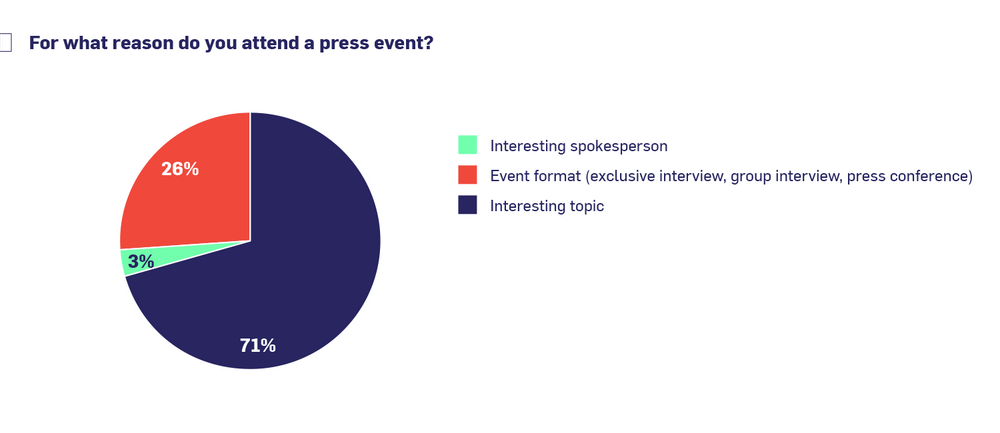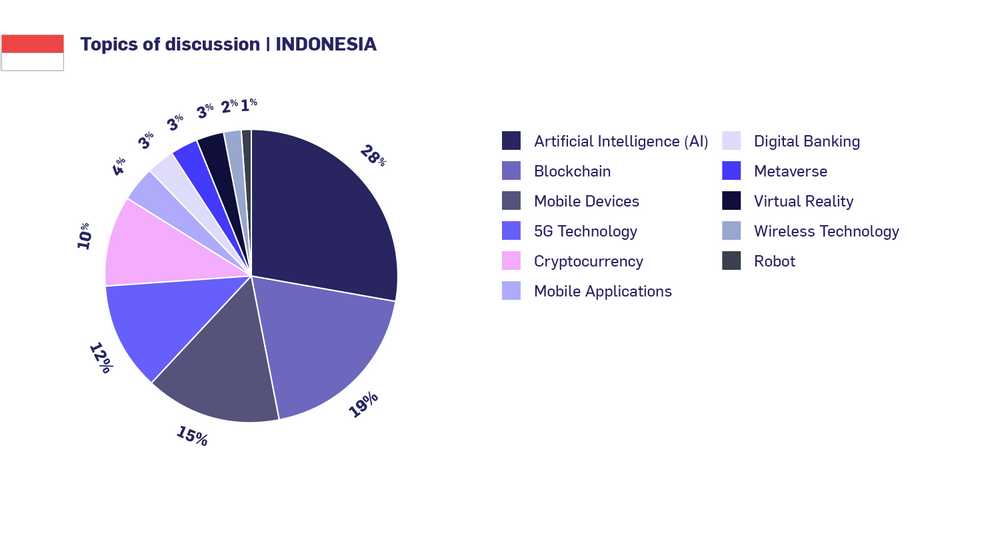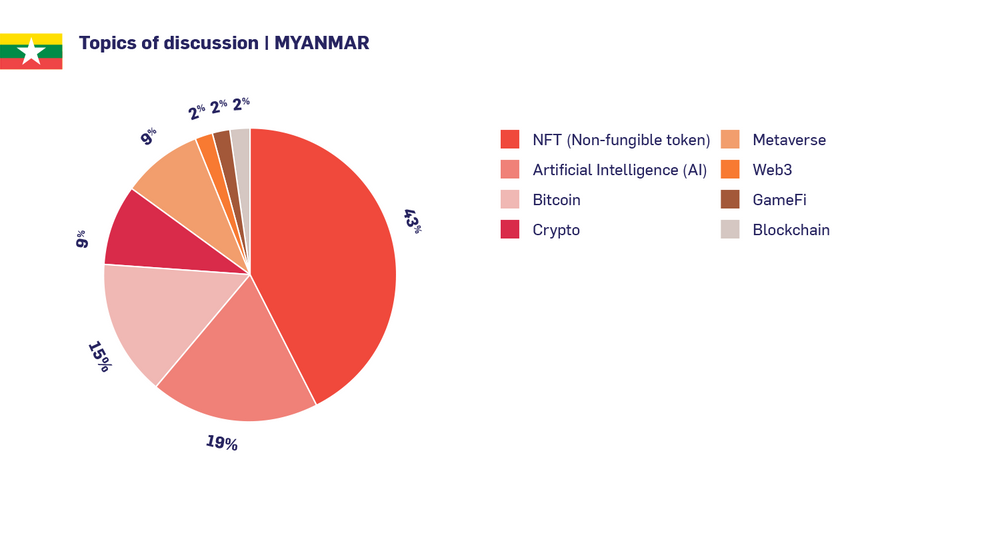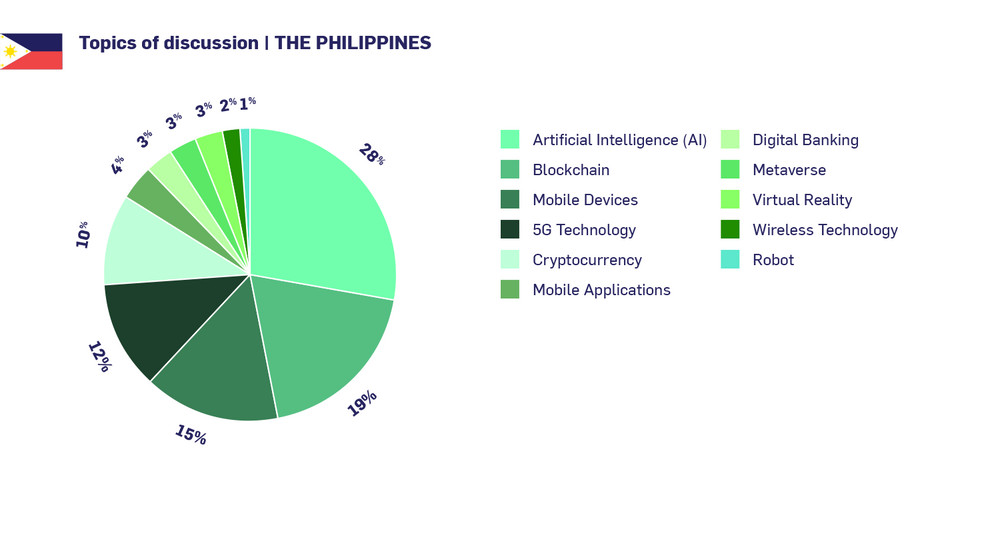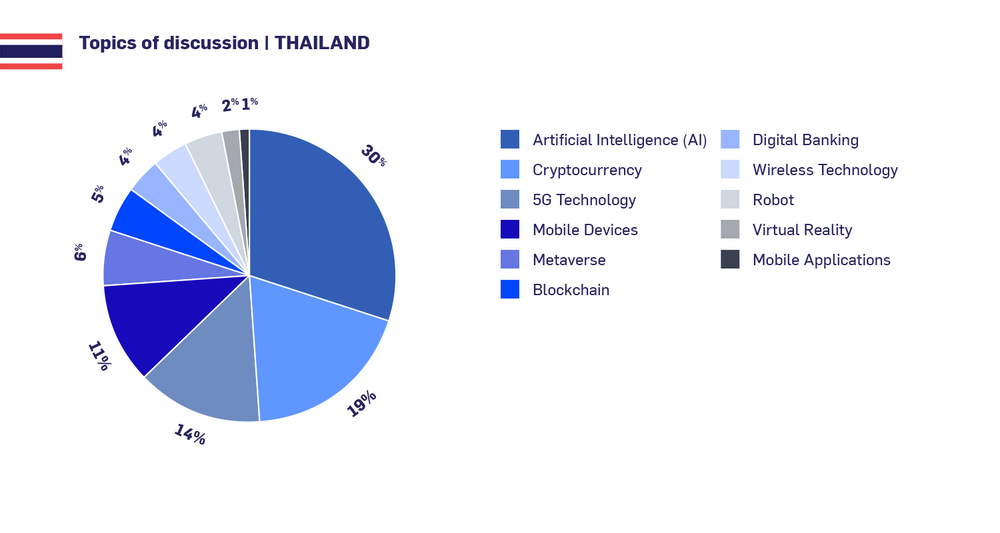Media relations professionals know etiquette when working with journalists and bloggers in Southeast Asia. They know that they must build relationships, understand priorities, have well-packaged stories to tell, and ultimately, treat the media as collaborators in creating narratives that audiences will appreciate.
So how are bloggers and journalists doing today as we shift into what we all hope will be better, post-pandemic times?
A new survey of tech journalists and bloggers conducted by Vero’s data and insights and media relations teams offers several insights that brands, companies, and organizations in Southeast Asia should keep in mind:
- The most popular topics for published news are Artificial Intelligence and Blockchain with 31% of all stories from technology publications covering AI and 16% covering Blockchain.*
- Journalists and bloggers want inclusive, hybrid press events where they can engage with new products and services.
- Data that helps to tell a story will capture the attention of journalists and editors covering a wide variety of tech companies.
- Media wants video content because they know there is demand for more of it.
- Timeliness remains crucial, especially in terms of telling stories about how new technology will impact daily lives.
Vero analyzed data across five countries in Southeast Asia and surveyed 58 tech journalists from Indonesia, Vietnam, Thailand, Myanmar, and the Philippines to get their insights on the best way to approach media, what brands can do to get seen, and what topics are hitting the headlines.
Journalists are looking for more CONNECTION
Lockdowns across the region drove us online. Our shopping habits, social lives, and work put us in front of screens more than ever before. For many, this was a positive development that meant no more long commutes to the office. But despite ongoing hype for digital universes and interactions, 20% of respondents prefer offline events, with only 7% stating a preference for online.
For journalists, a lack of face-to-face connection has led to missed opportunities to develop more in-depth stories, build relationships, and observe others getting hands-on with new products.
“Brands should make sure they understand the changes to our industry before planning events. Careful consideration of all factors is important when reaching out to reporters to invite them to events and interviews,” said Desmal Andi Ismanto, Editor in Chief at Mobitekno in Indonesia.
“After the pandemic, some brands are switching completely to online engagement activities. But for me, offline activations are still the best format to engage with brands and products,” said Phan Sỹ Tuấn Anh, CEO of Alpha Media in Vietnam.
“When developing press events, brands should be mindful of our new hybrid take on working. A two-pronged approach, such as an in-person event that is live-streamed, means that anyone can attend, regardless of location. However, this approach will only best be applied when brands are looking to engage with media that is based in different regions. Offline attendance of the press at events still proves to be the most effective way when it comes to encouraging communications, engagement, and genuine connection,” said Nguyen Thi Quynh Anh, Media and Influencer Specialist, Vero, Vietnam.
The response also shows that, while having a topic that interests journalists is still the biggest draw, appealing event formats such as exclusive access to interviewees, group interviews, or products are also a big motivation to attend an event.
“Sometimes brands are still not aware of how important product reviews are for our journalists and bloggers, we cannot stress enough the importance of this step in the communication process. Journalists want to get hands-on and fully understand how a new product will impact people’s lives. What does it feel like when you hold it or use it? How will it help consumers, or what problems will it help solve? These are the stories brands should be looking to tell through their communications,” said Noviana B Rasyid, Account Manager, Vero, Indonesia.
Hot Topics
What are media outlets publishing online?
From April – May 2022, we saw a 12% increase month on month in the online use of the term “technology” or “tech” in the Asia Pacific region.
With the help of our Data and Insights team, we took a closer look at these mentions, to better understand the regions emerging tech trends.
AI and the blockchain take the lead in the countries we surveyed (Indonesia, Myanmar, Philippines, Thailand, and Vietnam), with some slight localized differences.
The following data is from April – May 2022.
In Indonesia, 28% of tech mentions in top-tier media publications focused on AI and how advanced technologies enhance business, public services, and academia, especially data science and cloud computing.
Nineteen percent of tech mentions in Indonesia were linked to blockchain technologies such as NFTs (particularly Solana), digital asset training, Web3, and Ethereum – and how each of these new blockchain technologies can be integrated into daily life.
News about mobile devices captured 15% of mentions, covering innovations in smartphone technology such as gaming features at affordable prices.
Due to the ongoing crisis in Myanmar, we were unable to extract online mentions of tech topics there. The following data comes from MyTech and RedFOXLabs.
In Myanmar, NFTs are the most popular tech news topic, including knowledge and insights, information on ecosystems, and listings for NFT art creators.
AI is also a popular news story in Myanmar, with the most published news covering information on Tesla Cars, Starlink, internet satellites, and AI technology that is integrated into smartphone systems or consumer electronic devices.
Crypto and bitcoin also rank high in Myanmar, with a focus on bitcoin prices and changes in the market.
AI also tops the board in the Philippines, with 28% of articles exploring software updates on phones and smart home gadgets, as well as related topics such as cybersecurity, AI-powered medical devices, and the opening of AI-centric academic courses in the country.
Blockchain is an area of interest for Filipino media outlets, publishing stories on NFTs, digital asset trading, Web3, and Ethereum.
Mobile devices capture 15% of news stories in tech publications in the Philippines, with the main foci being detailed reviews and comparisons of new smartphones on the market that shine a light on specs like processors and battery life.
AI dominates tech news in Thailand as well, signifying a regional trend. In Thailand though, media mentions of AI tend to focus on how it can enhance business and industry, specifically when it comes to big data and data science.
Cryptocurrency stories on trends and price changes are also popular in Thailand, with 19% of tech news stories covering these topics.
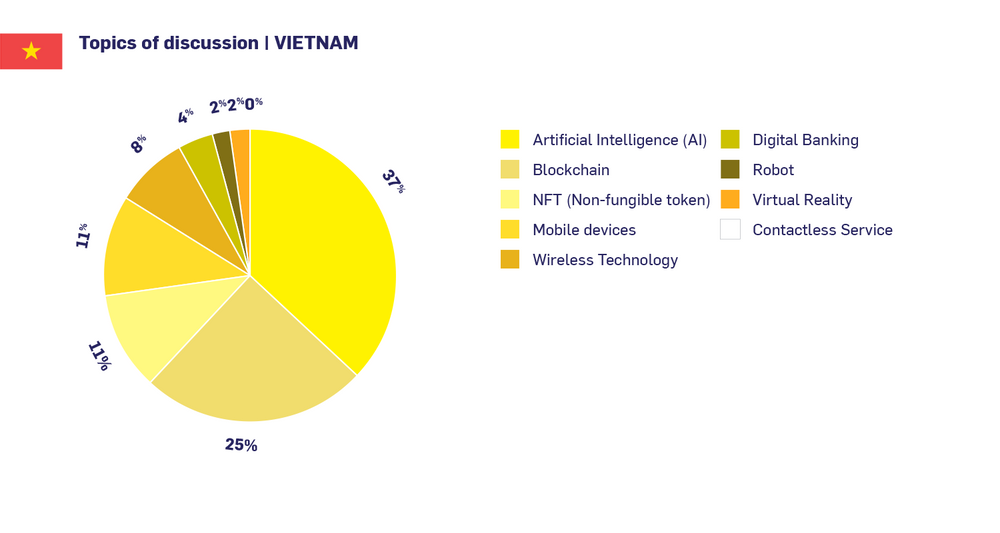
Vietnamese news outlets are also keen to post articles about the blockchain, in which they tend to focus on Web3 and market trends.
Time waits for no brand
A word that came up repeatedly in our journalist survey was “timeliness.”
Journalists prioritize stories that are new or current and have an immediate impact on society and/or our day-to-day movements. For example, the most recent top news story on Hybrid.co.id, is about the Narzo 50 5G, an affordable but powerful smartphone, aimed at giving young people more capacity for online gameplay, an issue that has long plagued this demographic.
Lenovo too, successfully gleaned press coverage with the launch of their new Eyesafe Certified 2.0 standard screen. This technological development comes in response to global health research which has given experts in eye care and engineers in the technology sector more understanding of the potentially dangerous impact of continuous exposure to blue light on the human retina.
Devices, systems, and services that make human lives better or easier are more likely to be featured, whether they are new developments, advancements in products, or services that already exist.
“Timeliness and public interest are key factors in being featured. Stories must be well-researched, with lots of valuable information and analysis,” Phan Sỹ Tuấn Anh, CEO of Alpha Media in Vietnam.
“We’re focusing on topics that are related to our modern way of living,” Kevin Bruce Francisco, co-founder of The Modern Creatures in the Philippines.
Video is the star maker or breaker
The pandemic impacted how netizens consume content. Boredom and lack of socialization led consumers online, where video content boomed as a result. The rapid rise of TikTok had its rivals scrambling to catch up, leading to algorithms designed to favor video.
It is no surprise, then, that when asked about their publication’s goals for the upcoming year, the journalists we surveyed across Southeast Asia mentioned attracting larger audiences and implementing more reviews and video content. Nearly 20% of respondents noted that they were looking to publish more videos.
These two concepts are intrinsically linked. As consumers head to TikTok, YouTube, or Instagram to watch unboxing videos and reviews of products and services, media publications must provide similarly authentic and engaging content to draw readers back to them.
“Companies that want to gain more market share should be putting effort into creating authentic earned communication that cuts through advertising noise. This will help to get them noticed by journalists with the same goal,” says Ye Min Tun, Senior Media Relations Specialist at Vero.
“TikTok is really gaining momentum in Southeast Asia, rising 14 percentage points in 2022, to claim a 37% share of the market. 2 For brands to succeed, video is a must-have. Especially in the tech sector, when consumers are looking for hands-on information about how a product works,” Nitikarn Ladasathean, Media and Influencer Relations Manager, at Vero.





